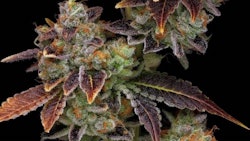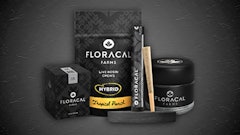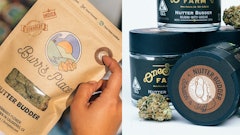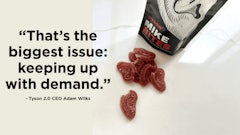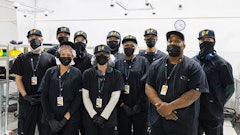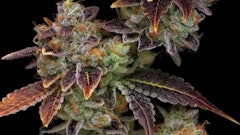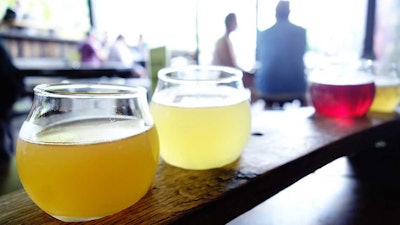
I spent more than 25 years working in the craft beer industry, the last 20 of which were with The Boston Beer Company. As I approach my first anniversary since I joined the cannabis industry, at least twice a week someone asks me some variation on whether the cannabis industry is just like the beer business, or if it’s completely different. My short answer is always, “yes."
In any industry, strong brand management often hinges on strategic product development. But that’s especially true in cannabis, where consumers are always on the hunt for novelty and white space is constantly expanding as the industry evolves. Indeed, the rapid pace at which regulations change means brand managers need to be particularly proactive about R&D efforts.
The research and development process is one way brands in any industry get to know their target audience better and discover new ways to meet their needs. But when that target audience is going through a massive paradigm shift over just a few years, changing long-held attitudes about cannabis and the role of consumption in everyday life, brands and their buyers are truly growing up together.
This means that brand managers must act as product managers, too, to be truly strategic. I’m seeing striking parallels between cannabis product development and lessons learned from the craft beer industry.
1. Find your corner of the cannabis industry.
Marketers love chasing and finding the “Big Ideas.” “Blue Ocean Strategy”—a business strategy and the name of a book by Renée Mauborgne and W. Chan Kim—is focused on opening new market spaces and creating demand where there is no current competition. I love this way of thinking because it implies commonly held consumer or industry boundaries are not permanent. Rather, they are only temporary until the next disruption comes along.
A recent example is the hard seltzer boom. When White Claw and Truly launched in 2016, the global hard seltzer market didn't even exist. In 2022, it was worth $23.8 billion, and is expected to continue to grow. The Blue Ocean Strategy advocates for looking beyond common conventions and norms, an incredibly energizing perspective.

Although it’s not as nascent as the hard seltzer category, the cannabis industry is still very new—particularly in states that legalized adult-use sales only recently such as New York, New Jersey and Minnesota. That means there’s still a lot of uncontested market space where cannabis brands can create demand. There are no guardrails from the perspective of consumers, the majority of whom crave novelty.
2. Leverage Innovation For Brand Awareness
Building line extensions is an effective way to build buzz for your brand and attract new customers. This is a particularly effective strategy to deploy when your marketing dollars (and avenues to spend them) are limited. Think about all of the brewpubs, tap rooms and emerging craft distillers you might encounter. They are exciting customers by continually innovating and enticing them with new flavors to try. This is a relatively low-cost means of marketing because, as long as you can sell your product, you’re actually making money.
Cannabis companies often find themselves hemmed in by both budgets and marketing regulations. Leveraging product development efforts with a marketing and PR strategy in mind is a strategic path forward.
For example, timing a limited summer release of a beach-friendly edible for Massachusetts helps the press releases write themselves. By offering something fresh that appeals to a younger audience, MariMed leveraged innovation to bring new consumers to our overall brand. All of this is accomplished without spending marketing dollars outside of the necessary packaging and ingredients.
3. Keep Chasing Perfection
Responding to consumer preferences is a key part of brand management, and product optimization is a great way to respond to your target market’s likes and dislikes to garner loyalty and goodwill. As brands continue to optimize their products over time, they not only improve those products; brands also learn more about who their audience is and what their pain points and shared values are.
Jim Koch, Boston Beer’s founder, has always had a restless dissatisfaction with the status quo. This means that even that one of the most well-known and successful craft beers of all time, Boston Lager, was never a finished product. You can always learn and you can always do better. Sometimes it’s rounding out a particular flavor, and sometimes it’s finding ways to preserve the hop aroma for a longer shelf life. But either way, just as individuals are always learning and improving, so too are product developers. In cannabis, where everything is new and emerging on a daily basis, it's imperative that we take these lessons from similar industries and remember that we’re still just beginning to chase perfection.
4. Balance Innovation With Old Reliable
As valuable as product development can be for brand differentiation, marketing and engendering loyalty, it’s important not to get caught in a grueling innovation cycle. Launching a product that adds 10% to revenue each year can help a growing cannabis brand make its start or squeak through lean times. But it can also create an incentive to continue that annual launch cycle regardless of other factors—and that’s not always strategic in the long run.
To offer another example from the craft beer space, many of the brands that were launching trendy new SKUs like hazy IPAs and sours even a year ago are now prioritizing a back-to-basics approach by tightening their portfolios.
As more breweries chased the total addressable market by expanding their footprint, they began to squeeze themselves out of competitive shelf space and dilute their own brand recognition. Supply chain issues exacerbated by the pandemic and fluctuations in the agriculture sector are also incentivizing breweries to focus on freshness and consumer connection.
Cannabis brands aren’t there yet—the average shopper in this industry is still elated to be able to buy legal weed and is excited to try as many strains and formats as possible. The need for consumer education in cannabis continues to contribute to product diversity and innovation. But cannabis companies shouldn’t forget that for every exciting new strain, gummy flavor or cannabis beverage that sells, their core products are what bring customers back again and again.
After all, cannabis isn’t fast fashion. Trends may bubble up frequently, but consumers are looking for more than a source of amusement. Even recreational shoppers are seeking a particular experience, feeling or flavor, even if their needs aren’t always as explicit or specific as medical cannabis consumers. Preference is powerful. And as much as cannabis consumers love trying new things, they ultimately want the same thing from cannabis as any other CPG category—a trusted favorite brand to return to again and again.
Jay O’Malley, MariMed’s Vice President of Marketing & Research and Development, spent 25 years in the craft beer sector before pivoting to Massachusetts' legal cannabis industry.










